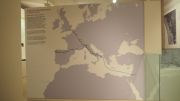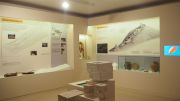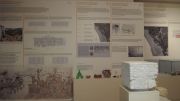The Late Middle Ages represent a period of huge scientific achievements, especially in Geography thanks to the trades with Arabic and eastern populations that had invented many instruments such as the astrolabe and the compass, and were experts in cartography.
Pisa is one of the most important trading centers with the other ones in the Mediterranean sea. This fact is highlighted by the numerous ceramic basins of Islamic origin, founded in Pisa and Lucca’ s churches.
Another important role was played by the great pilgrimage trails, that touch the most sacred places of Christianity, as Canterbury, Rome, Santiago de Compostela and Jerusalem.
Camaiore is also an important step of this path. In fact the Archbishop of Canterbury, Sigeric, describes this city in his diary during the return journey from Rome to the United Kingdom.
From the year one thousand in Versilia increases the number of sacral buildings and castles, that were the symbols of the local seigniories’ power, then absorbed by Lucca’ s territory, in the 13th century.
In particular, Montecastrese’ s castle was studied with several archaeological excavation campaigns, and also by a complex digital survey, thanks to a 3D Laser Scanner that allowed the creation of a reconstruction of the fortified top and the building’ s three-dimensional reconstruction.
This area is inhabited from the 3rd century B.C., while in the 10th century is a fortified castle and remain so till its destruction, after Lucca’ s conquest in 1223-1225.
From Montecastrese comes an important Byzantine icon, recovered by Pisa’ s soldiers that carried it into Pisa’ s cathedral, which is its current site. This is a reproduction of the icon, realized by a local school.
There are also: a fourteenth-century capital from Badia of Saint Peter in Camaiore; a decorative architectural element from Montebello’ s church, both in marble; a stone epigraph that illustrates the founding of Collegiata di Santa Maria Assunta, and the 3D reproduction of the capital from the church of San Martino in Gello (Camaiore), but the original one is exposed in Villa Guinigi Museum in Lucca.










